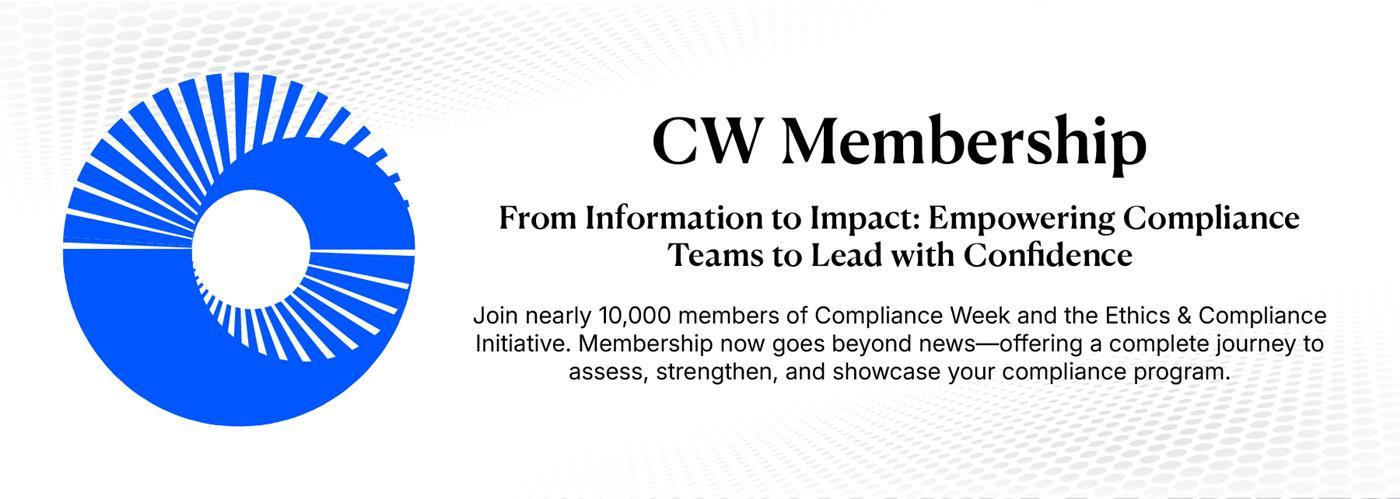- Home
-
News
- Back to parent navigation item
- News
- National Compliance Officer Day 2025
- Accounting & Auditing
- AI
- AML
- Anti-Bribery
- Best Practices
- Boards & Shareholders
- Cryptocurrency and Digital Assets
- Culture
- ESG/Social Responsibility
- Ethics & Culture
- Europe
- Financial Services
- Internal Controls
- Regulatory Enforcement
- Regulatory Policy
- Risk Management
- Sanctions
- Surveys & Benchmarking
- Supply Chain
- Third Party Risk
- Whistleblowers
- Opinion
- Benchmarking
- Certification
- Events
- Research
- Awards
-
CW Connect
- Back to parent navigation item
- CW Connect
- Sign In
- Apply
- Membership
As America girds for coronavirus lockdown, China’s experience offers hope
By  Aaron Nicodemus2020-03-16T19:30:00
Aaron Nicodemus2020-03-16T19:30:00

As America nears the dark tunnel of a coronavirus-caused government lockdown, it can learn from the experiences of China, which is about to exit from the other end.
THIS IS MEMBERS-ONLY CONTENT
You are not logged in and do not have access to members-only content.
If you are already a registered user or a member, SIGN IN now.
Related articles
-
 Opinion
OpinionHow to identify and mitigate risks posed by Foreign Terrorist Organizations
2025-12-24T18:55:00Z By Michael K. Atkinson and Caroline E. Brown, CW guest columnists
Since Inauguration Day on Jan. 20, 2025, the Trump Administration has made it a priority to expand the list of designated Foreign Terrorist Organizations.
-
 Article
ArticleFormer COO of plastics importer faces up to five years for customs falsifications
2025-12-24T13:54:00Z By Adrianne Appel
The chief operating officer of a plastic resin importer has pleaded guilty to intentionally falsifying documents to avoid paying tariffs on goods from China, the Department of Justice (DOJ) announced.
-
 Article
ArticleCybercrime against banks and account holders takes hit from FBI
2025-12-23T21:50:00Z By Adrianne Appel
Federal investigators have announced progress in dismantling an online criminal operation that steals bank account information by mimicking legitimate bank websites.
More from Risk Management
-
 Article
ArticleRapid regulatory change requires investment in compliance processes in financial services firms
2025-11-20T21:55:00Z By Ruth Prickett
Geopolitical instability and a general focus on increasing growth and productivity by governments worldwide are causing a slew of regulatory changes in the financial services sector. But most firms are failing to identify potential compliance changes early enough to make meaningful decisions.
-
 Article
ArticleCompliance should protect firms from AI-washing investigations and insurance claims
2025-11-05T20:28:00Z By Ruth Prickett
Insurance firms are warning that AI-washing could trigger a slew of cases against directors, and are adjusting their directors’ and officers’ liability premiums accordingly. With regulators cracking down on AI-washing, compliance could be a crucial line of defense and save companies on their insurance costs.
-
 News Brief
News BriefAI hallucinations in Deloitte Australia report highlight important role for compliance
2025-10-24T18:57:00Z By Ruth Prickett
“Hallucinatory” citations and errors in an AI-assisted report produced by Deloitte for the Australian government should be a wake-up call for compliance officers about the risks of placing too much trust in AI.
- Terms and Conditions
- Privacy Policy
- Do Not Sell My Info
- © 2025 Compliance Week
Site powered by Webvision Cloud






